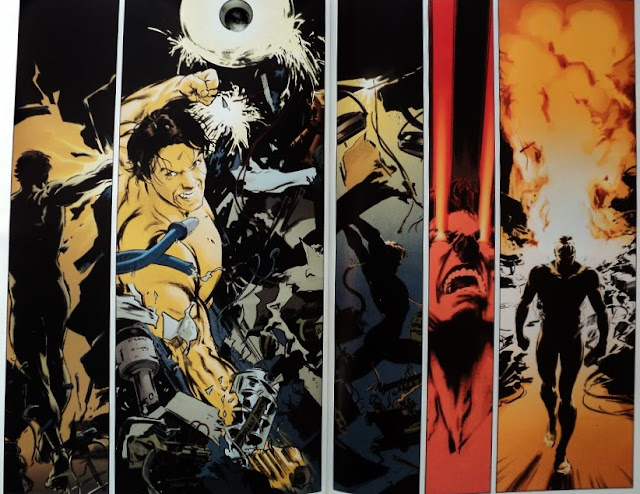Andrew Haigh directs Lean on Pete (2017), based on Willy Vlautin's novel, a coming of age story about Charlie Plummer, a 15-year old boy who doesn’t have much and yet loses everything overnight. Without a father, a mother or a home, he invests himself emotionally in his part-time job: taking care of Pete, a racing horse owned by Steve Buscemi (Saint John of Las Vegas). As a naïve teenager, he is unable to understand the complexities of the world of horse racing, and refuses to accept the reality of the game: if a race horse doesn’t win, then it’ll be put down. The young boy decides to steal the horse and starts a road trip through the Pacific Northwest, but as time goes on, his already scarce resources dwindle down. After the horse’s death, the protagonist starts to steal food and wanders the streets, until he realizes he has become a homeless kid. Lean on Pete is a dramatic, heartfelt and deeply moving tale about survival and the loss of innocence.
________________________________________________________________________________________________
________________________________________________________________________________________________
El libro autobiográfico de David Sheff “Beautiful Boy: la travesía de un padre a través de la adicción de su hijo” sirve de base para Beautiful Boy (2018), dirigida por Felix van Groeningen, una película extraordinaria y única que nos obliga a reflexionar sobre la compleja relación entre padres e hijos en un contexto de adicción a las drogas. Steve Carell (The Big Short) es un escritor y Timothée Chalamet (famoso por su papel como adolescente gay en Call Me By Your Name) es su hijo adolescente, el 'hermoso chico' sobre el que John Lennon cantaba. Hay una fuerte relación entre padre e hijo, son cómplices pero también amigos, y viven en un barrio idílico en San Francisco. Pero la adicción del hijo se está saliendo de control. Los padres tienden a idealizar a sus hijos y, por supuesto, también sienten la compulsión de protegerlos. Sin embargo, ¿hay algo que puedan hacer cuando la dependencia a las drogas va en aumento? Carell intentará hacer todo lo que pueda y esa es una de las tragedias de la película: el hecho de que el padre sacrifique su vida y todo lo que tiene para tratar de mantener a su hijo alejado de las drogas. Y, sin embargo, una y otra vez, los resultados son los mismos: el hijo tiene una recaída tras otra, y nada parece funcionar, ni el programa de desintoxicación, ni la rehabilitación, nada. Felix van Groeningen captura a la perfección el estrés constante, el dolor experimentado por toda la familia, la preocupación constante del padre, las inexplicables ausencias del hijo a altas horas de la noche, la repentina desaparición de dinero en la casa, el temor de saber qué podría pasarle al adolescente y la triste certeza de que el hijo nunca alcanzará su pleno potencial. Al final, lo que queda es un gran vacío emocional en ambos extremos: para el padre es casi como si estuviera perdiendo a su hijo y para el hijo es como si estuviera perdiendo todo lo que le importa o le importaba en su vida. Carell y Chalamet ofrecen una actuación fascinante, creando momentos intensos y poderosos. La película golpea con fuerza, hay momentos en los que la intensidad emocional es tan fuerte que es difícil respirar. Beautiful Boy es una cautivante exploración de la adicción, desgarradora y honesta. Y también es la mejor película del 2018. Se la recomiendo a todos.
Andrew Haigh dirige Lean on Pete (2017), basada en la novela de Willy Vlautin, una historia sobre las dificultades de la adolescencia. Charlie Plummer es un muchacho de 15 años que no tiene mucho y aún así lo pierde todo de la noche a la mañana. Sin un padre, una madre o un hogar, se dedica de lleno a su trabajo de medio tiempo: cuidar de Pete, el caballo de carreras de Steve Buscemi (Saint John of Las Vegas). Como adolescente ingenuo, no puede entender las complejidades del mundo de las carreras de caballos y se niega a aceptar la realidad del juego: si un caballo de carreras no gana, entonces va para el matadero. El jovencito decide robarse el caballo y emprende un viaje por carretera a través del Pacific Northwest, pero a medida que pasa el tiempo, sus ya escasos recursos disminuyen. Después de la muerte del caballo, el protagonista comienza a robar comida y deambula por las calles, hasta que se da cuenta de que se ha convertido en un niño indigente. Lean on Pete es una historia dramática, sincera y conmovedora sobre la supervivencia y la pérdida de la inocencia.





























